Contemplative Times, Issue # 9
The Newsletter of Meditation Chapel
The Meditation Chapel Vision
Meditation Chapel nurtures unity and peace through the sharing of divine stillness and sacred listening. We support groups of all faith traditions in offering and sharing the contemplative experience through the sacramental use of technology.
LETTER FROM THE EDITOR
“The grace of wisdom is granted in the course of the spiritual quest—sometimes, though not necessarily, through a human agent.” ~ John Richard Sack
Spiritual teachers. You and I may share a few. Holy Spirit, Christ, Gandhi, Thomas Merton, Hildegard of Bingen, Magdalene, Ursula LeGuin, Soren Kierkegaard. Surely many of us have too many to remember. There are other teachers that, as I contemplate my role as student, burst like sunrays through fog:
Trees. Animals. Art.
Water. Loss. Humor.
Friends.
Shadow.
My grandmother’s arthritic hands.
Childhood summers.
Every relationship I have ever had.
Dreams.
Silence.

Photo by Laura Waters
Spiritual teachers are everywhere when we are open to receive what they generously offer – presence, wisdom, discernment, forgiveness, direction, humility, kindness, how to embody love, and so much more.
I invest a fair amount of energy receiving images for photographs, listening with others, and walking in nature. Each moment invites me to open more expansively to receive what is present – a life lesson, eternal wisdom, and awareness. During the Winter Solstice in December 2020, I stood at the pond in front of my house and received images of the Grand Conjunction of Jupiter and Saturn for two hours. A few things those hours taught me:
Everything changes.
Perception often determines approach.
Patience cultivates trust.
Trust cultivates patience.
Darkness and Light sing a beautiful duet of harmony and necessity.
Consciousness and alchemy are more similar than I thought.
Timing matters.
Alignment is a vehicle for peace.
I know nothing.
In a recent conversation, an elderly friend said, “I can now – at age 80 – discern the voice of the Divine from my own. When I respond with an ‘aha,’ that’s when I know it’s God.” A tear escaped my eye, for that is exactly how I felt watching the Grand Conjunction in December. Surprised. Amazed. That is how I feel when I listen to the wind, when I hear a purring cat, when I watch the moonrise over the ocean. That is my response when I am aware of Truth and Love.
Out of curiosity of learning how any of us decide who or what is our spiritual teacher, I invited some folks to share their experiences and ideas on the topic. Pamela Begeman, Karen O’Brien, Colleen Rusch, and Tissy Palack contribute diverse approaches to the theme – a testament to how Spirit speaks through us in different ways.
This issue also brings you poetry and paintings by Janice Andrews, Jo Nan Carr, Val Perkins, and Marcia Stoner. Arthur Aghajanian contributes a piece in our Art and Contemplation section.
Be sure to check out the new facilitators and groups and welcome them to Meditation Chapel. Mary Ann Holtz wrote a short article on her new group that starts this month.
Finally, exciting news about the future of Meditation Chapel – the announcement appears at the end of the newsletter.
As always, thank you for being here. It is a pleasure to serve this community in the name of Love.
Laura Waters
Editor, Contemplative Times
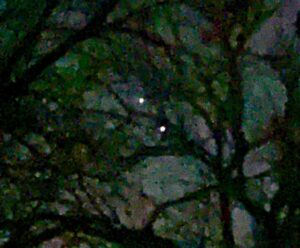
Planets by Val Perkins
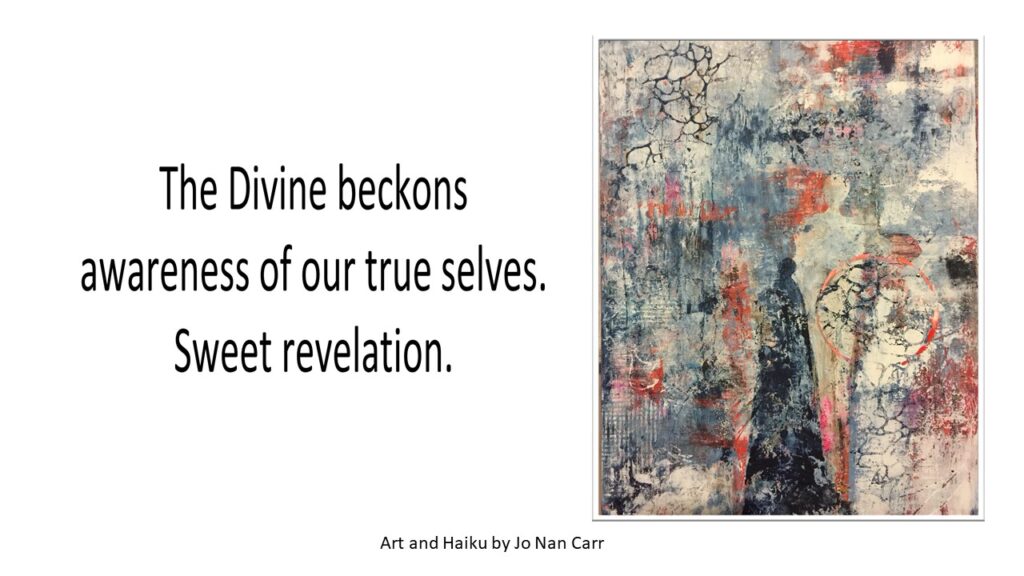
A TEACHABLE DISPOSITION by Pamela Begeman
The Lord will give you bread in adversity
and water in affliction.
No longer will your Teacher hide,
but with your own eyes you shall see your Teacher,
And your ears shall hear a word behind you:
“This is the way; walk in it,”
when you would turn to the right or the left.
– Isaiah 30:20-21
The spiritual journey is a narrow path found by few, and thus necessitates guides, wisdom figures, practices, and companions to swim against the current of cultural, familial and egoic programming.
Even more so, as the journey deepens, I have many times needed a hand through the swamps and fires of purification and dark night cycles. As one of my teachers quipped, “We’re not all crazy on the same day!” – meaning I need the steadying influence of spiritual companions and wisdom figures to guide me through the mapped and unmapped unfolding of the divine-human adventure, not to mention as objective witnesses to help me see what is unconsciously operating in me.
To have a teacher is to put oneself under the authority of a person’s wisdom and experience, which is also true when committing to a set of practices or an intentional spiritual group. This is not a passive doormat disposition, but one of humility. I come as a child with curiosity, wonder, attentiveness, receptivity. If my defenses and resistances are active, what can I possibly receive? Do I come with a teachable disposition?

Nicholas Roerich, Covenant of Teacher, 1947
With this is my responsibility to discern and verify everything in my experience. I ponder and practice it in my own life to see what works and does not work at this moment in my unique life circumstances. I practice being responsible for the stories and programs that hinder my understanding, evolution, and transformation. I recognize arising body sensations and constrictions as the transmission of higher teachings disrupts and triggers the crystallized parts of the self. All the questions, reactions and resistances are then invited into the light of the witnessing presence within. Welcome to the Light, the healing Light of the Spirit. “Welcome, welcome, welcome. I let go of my desire for security, affection, control and embrace this moment as it is.” (See the Welcoming Prayer practice).
I have had teachers from many religions and from many wisdom traditions. My daily practice and rule of life is my ever-present and evolving teacher, as are the trees and my dog’s ever-wagging tail. I have had both good and bad experiences with spiritual teachers; every experience has been invaluable. Most of my teachers are now beyond form, guiding from the conscious circle of humanity or the communion of saints. I pray to my teachers and ask for help every day because I need it.
Perhaps the most valuable gift I have received is that which shows me the way back to the Indwelling Presence, to the inner source of wisdom and guidance, which is why the quote from Isaiah is one of my favorites. In my case, the ability to hear the still, small voice within was programmed out of me in my early teen years. Thankfully, that connection has been restored. When recollected and re-membered, I hear/sense/feel the inner promptings that know the difference between what is true and what is false, that knows the next right action or right restraint, that knows how to navigate the journey with clarity and intention. The importance of contemplative practice of discernment, of listening deeply for these promptings, cannot be overstated. Nor can it be rushed or forced. It operates in its own time with its own language of gut sense, guidance from synchronized patterns and confirming signs, and sometimes words.
Ever more so, I have learned there are no mistakes. When I am awake and willing, everything serves my transformation and becomes my teacher.
Garden Contemplation by Janice Andrews
If we approach our guides and resources with a calm mind and discernment, and if we are willing to let their teachings transform our daily activities, they will help lead us toward the full awareness we seek.
~ John Richard Sack
Saturday, March 6, 2021
|
Follow Your Bliss to Make a Difference by Karen O’Brien
Often discernment is as easy as figuring out what it is you love doing, and then figuring out how to do exactly that, for the good of others.
I love making things, but never thought of that as being a special skill that could help anyone in any manner, until in college, when I spent one particular spring break with a team of medical and nursing students in rural Kentucky. Being neither an aspiring doctor or nurse, I went along to clean and stock the clinic. However, when the woman running the clinic, a nurse practitioner, found out I was a budding artist, she immediately took me out of the clinic and got me making stuff. Among my many “artistic tasks” were painting handmade birdhouses, making folk toys, and putting colorful, hand painted labels on fruit preserves— “fundraising crafts” sold to benefit the clinic. I even carded, spun, dyed and wound artisan quality wools into skeins–another “fundraising craft” for the clinic—which, by the way, I hadn’t a clue how to do, prior to the day I was assigned the task.

Winter by Karen Rushen O’Brien
At the end of the week I was lauded for my efforts by this nurse, who told our team teasingly, “I host regular rotations of medical staff at our clinic, but when I get someone in here who’s an artist—well, now that’s a special gift that needs exploiting!” Of course, this wonderful nurse was, in large part, just trying to make me feel useful and included. Her “special gift” was finding out what people loved doing, and giving them the opportunity to do just that, for the benefit of her clinic. She had cultivated an “awareness” that impressed me greatly, and I have tried to emulate her for much of my adult life, looking for people’s talents and assisting them in using those talents for good. Had I not, I would have missed out on working with many, many talented people, like Pat.
Pat was the head of housekeeping and maintenance in the Florida hospital where years later I worked in “mission integration”—a fancy term for the department that helps staff see and do their jobs as their calling. Pat certainly believed being the head of housekeeping was a calling. She had always loved “home-making”, and viewed our hospital as one big “home” that needed her attentive care. She told me that without the cleanliness and order her department offered the hospital, tempers would fly, disease would spread and chaos would ensue. Pat always worked with energy and good humor, and her positive attitude was contagious. Many of Pat’s staff, in and out of the same patients’ rooms every day, became the ad hoc chaplains and social workers for many of them. Under Pat’s encouragement and direction, her staff were some of the most generous donors to our annual toy drives, canned goods collections and clothing drives for our economically disadvantaged patients and their families—and this while raising families themselves, on a housekeeping staff salary.
Pat loved “home-making”, but she also loved making dolls, many of which accompanied our medical staff on overseas medical missions, once another staff member told me about Pat’s skills. Bringing dolls to Haiti or rural Peru for our young patients might seem like a “nice thing” to do, but it’s much more important than that. A doll can calm and soothe a child, who is terrified of the foreign-looking, foreign-speaking medical staff poking around their little body. A doll also serves as a friend when “mommy” and “daddy” can’t be with them in the recovery ward, and often goes home with the child as their new and only toy.
Pat’s dolls were beautifully and lovingly made. These dolls were especially sought by our medical staff for their overseas trips, so prior to these trips, Pat and some of the nurses would organize “doll-making marathons” at someone’s home. We’d all arrive with our sewing machines and make dolls all day, tucking into potluck brunch and dinners, chatting and having a blast. It created camaraderie between departments, as well as many dolls.
Often we think we have to do something really special with our lives to have made a difference, but I think what really winds up being the most rewarding kind of life is one filled with all kinds of small gestures, lovingly done. Meditation and centering prayer lead us into a deeper awareness of not only the needs of others, but also our own special and particular “gifts” for meeting those needs. Consider how you are using your gifts for others. Maybe the thing you like doing best is the “gift” that’s missing in the lives of others…

Photo by Marcia Stoner
Blood red crystals
Multi-faceted gems
10, 20, 50 and more
Moving slowly through
Fingers and thumb.
To praise God
To acknowledge Mary.
Held to the light
Each bead
Glows like a flame
Burning from my heart.
Given from Fatima
A plea for prayer…
This holy rosary.
~ Marcia Stoner
Teacher of Truth by Tissy Palack
I have been trying to put into words the idea of a teacher as experienced in this life. The more I think about it, I am convinced that there is not one person, place or thing that can teach the depth and breadth of the Divine God. It sure can be a savored experience that mixes all the emotional flavors of the human condition in every waking moment. Teaching goes on through the myriad combinations of beings, places, encounters, thoughts and words.
I’m still solving a big puzzle of a nonbeliever whose unshakable balance surpasses my expectations. Through the silence, many have taught me better than anyone with words could teach. But it is the combination of the spoken and unspoken that has been keeping me curious, unbalanced and balanced, in the end. I rely on my own difficult and pleasant emotions to gauge my understanding of anything.
What this led me to is the one place where the true wisdom resides. My human  heart with the help of this body’s sensations is the ultimate teacher of Truth and apart from this space, I have not learned anything. May I never look further than my heart to learn the truth that I must learn in the capacity to which I am able, at any given moment. May I rely on my breath, as this is my connection to all that was, to all that is and to all that will be in the present moment. May I surrender to the wisdom of the heart and breath as they conspire to mold this being into the Silent and Gentle Spirit’s liking in each moment.
heart with the help of this body’s sensations is the ultimate teacher of Truth and apart from this space, I have not learned anything. May I never look further than my heart to learn the truth that I must learn in the capacity to which I am able, at any given moment. May I rely on my breath, as this is my connection to all that was, to all that is and to all that will be in the present moment. May I surrender to the wisdom of the heart and breath as they conspire to mold this being into the Silent and Gentle Spirit’s liking in each moment.
After writing these lines, I realized that a song from I often listened while growing up must have influenced my understanding. The song written in my native language Malayalam by Rev. Father Abel Periyappuram, C.M.I. and was sung melodiously by playback singer K.J. Yesudas. Translation of the song follows:
In Search of God
Searching for God, I walked
Crossing the oceans, I wandered,
Neither there, nor here was God
Nor in the deserts was God
Where are the footprints of God?
On Earth I searched and found not
Where is the beautiful abode of God?
In the skies I searched and found not
Have not seen have not seen, thus saying
The streams of the woods glided by
Won’t see won’t see, thus saying
The birds went fly, flying by
At last I turned inwards within me
Into my Heart, I entered
‘Tis There, the Abiding of the Divine
‘Tis Love, the Image of the Divine
‘Tis Love, the Image of the Divine
| The Examen is more of an attitude than a method. It invites us to find the movement of the Divine in the people and events of our day. The Examen is simply a set of introspective prompts to follow or adapt to your own character or spirit. |
THE EXAMEN AS A SPIRITUAL TEACHER by Colleen Rusch
As I considered spiritual teachers and guides in my life, I realized my Examen practice gave me a foundation to identify those rather random teachers.
I have landed on two questions in my Examen: What has stretched my space for love, beauty or joy. I think it may be defined as a spaciousness. Essentially what has attracted me to abundance. And on the other side of that question is what made my heart smaller or made the space in my heart shrivel?
Most of the time those questions are answered in a relational experience. It may come as I listen to sharing in meditation. It has come watching someone extend generosity. It has come as watching someone listen well. It has come in stories of a restored relationship. It comes through gentle responses to outrage. It comes through kind words. It comes as a sacred imagination; someone can see a realm of beauty and love that is still gestating, and the labor pains have just begun. But they offer a word or hope that stirs my ability to also hope.
I guess what I am circling here is I watch and listen for the random gifts that draw me to see love. Often, they are people who see everyone is the object of great affection, maybe not because they themselves are so capable of that love, but they have entered the great exchange: Receiving mercy and giving mercy. Having received compassion, compassion is extended.
The teaching is often in the small acts I note when I can be present and attentive. Again, it is living relationally with others and creation. My radar is alert to that beauty. It usually feels like spaciousness to live in the now, trusting where you are has a fullness of God’s presence. That can teach me every day and guide me to loving in the present. People with a wingspan that embraces life wherever they are on the journey. I watch and listen to learn that kind of spacious living.
The other question in my Examen is what has made my heart smaller or made the space in my heart shrivel? That too is a spiritual teacher. Noting when my own heart “sees small.” What made me shrivel? What smallness did I embrace thinking I needed to guard “mine.” Those too are teachers. They guide me to leave a dry, barren space and remember there is an alternative that I can be present to.
These are daily practices because that is how I have to keep reminding myself that my spiritual teachers are in the unexpected and simple spaces.
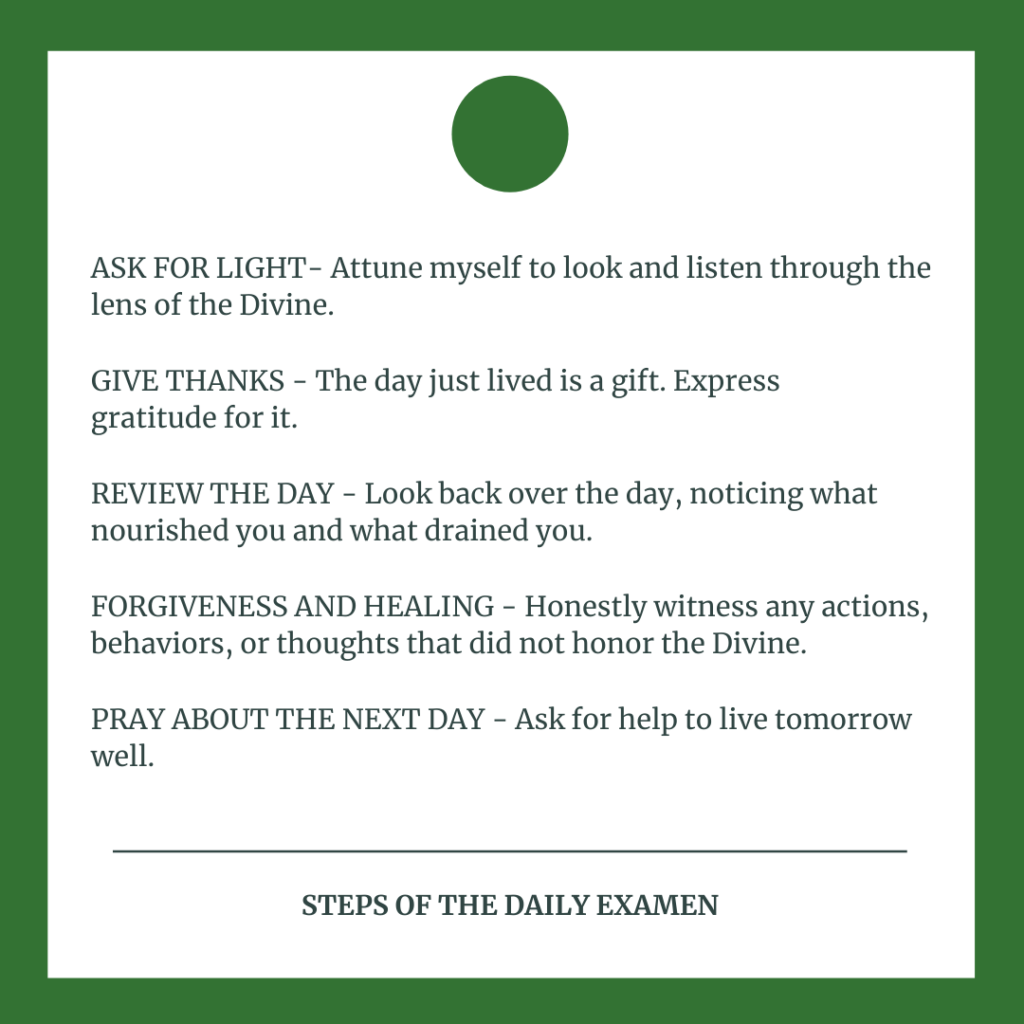
|
WELCOME TO OUR NEW GROUPS/FACILITATORS What: Silentium Spiritual Practice Group What: Centering Prayer Group in English What: Meditation Group: A Spring Within Us, by Richard Rohr’s What: Action and Contemplation Group What: La Voce del Silenzio (The Voice of Silence)
|
New Action and Contemplation Group by Mary Ann Holtz
There are clear signs that the Holy Spirit is at work in those of us who have been consenting to God’s presence and action in us, moving us to want to bring that presence and action into our work for justice, peace, and care for the whole Earth community.
Many gathered for the Contemplation to Action workshop with Fr. John Dear on January 23, 2021. Afterward, I heard from folks who want to explore more about the action side of the two-sided coin of Action and Contemplation.
Kathleen Rector and I held this desire in prayer and are happy to announce our new group on Meditation Chapel. Like all MC groups it will be open to MC registered folks and will include a time of contemplative prayer/meditation, followed by a time of lectio divina and sacred sharing.
We will begin the first series of gatherings on Saturday February 20, from 3-4:30 U.S. Eastern Time, in the Wisdom Chapel. In the first six meetings (during the Lenten season) our lectio divina will focus on quotes from Richard Rohr’s Dancing Standing Still: Healing the World from a Place of Prayer, which is a short book about the interconnection of contemplative practice and action in the world for healing, justice, and nonviolence. (While there is no need for participants to have the book, here is a link to purchase it: https://store.cac.org/products/dancing-standing-still-healing-the-world-from-a-place-of-prayer).
During the sixth gathering we will listen to the Spirit with each other for how to proceed in following meetings.
All are welcome to join us as often as you are able.
I will co-facilitate with Kathleen Rector. My background: 30+ years Centering Prayer, 35+ years psychotherapy in a church setting, 35+ years social justice/peace/earth community educator and activist. I have facilitated various kinds of groups, including group spiritual direction using Shalem materials for a group of psychotherapists.
Kathleen Rector is a Centering Prayer practitioner, has been an activist for many years, and recently completed the 18-month Transforming Community: Leading Contemplative Prayer Groups and Retreats program offered by Shalem.
If you would like to be on an email list to receive the lectio quotes prior to the meetings, please email me, Mary Ann Holtz, at maryannwalt@gmail.com.
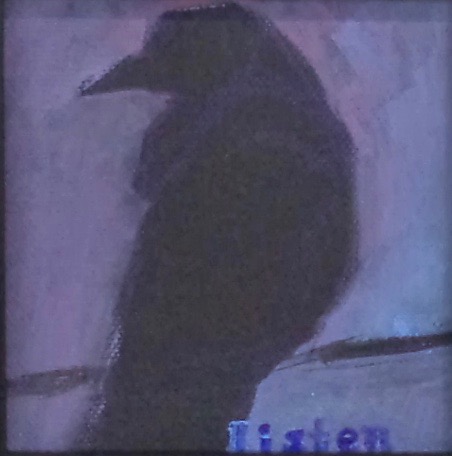
Listen by Janice Andrews
| NEWS FROM MEDITATION CHAPEL’S EXECUTIVE COMMITTEE |
In the November 2020 newsletter, Roger Sessions wrote an article on Meditation Chapel’s future. I share an update with you here.
As of late February, we are nearly finished with the process of becoming a non-profit group and we are now officially Meditation Chapel, Inc. We are making this change for several reasons. Most importantly, that we prepare Meditation Chapel for the future and stabilize our community for growth. Second, this move will reduce our expenses. Lastly, for U.S. residents, your donations to Meditation Chapel will be tax-deductible.
On that note, thank you for the inquiries regarding donating to Meditation Chapel. We will notify the community once everything is in place to receive your donations. We do appreciate you volunteering your time, love, and energy most of all.
Again, these changes will be largely unnoticeable for most members of the community. Our vision remains the same:
Meditation Chapel nurtures unity and peace through the sharing of divine stillness and sacred listening. We support groups of all faith traditions in offering and sharing the contemplative experience through the sacramental use of technology.
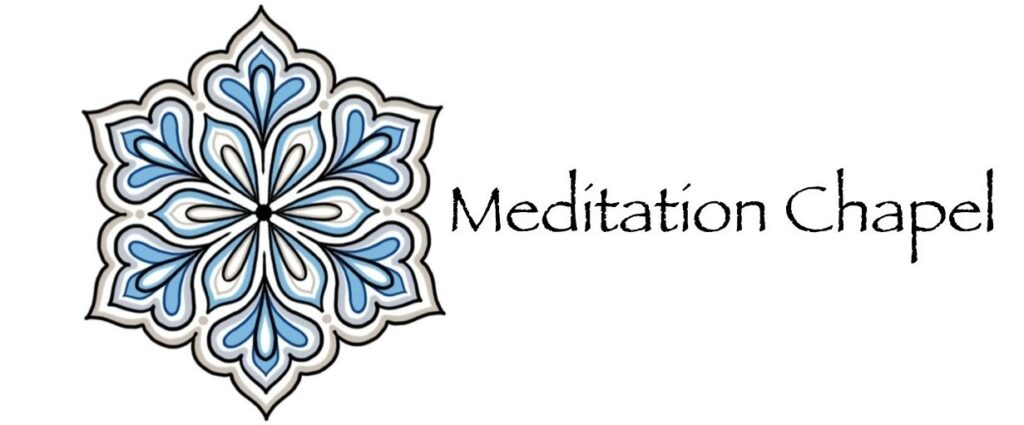 One visible change is a new banner that you will soon see on our website. A special thank you to Corey Krupowicz for his creativity and generosity in making this beautiful symbol for our community.
One visible change is a new banner that you will soon see on our website. A special thank you to Corey Krupowicz for his creativity and generosity in making this beautiful symbol for our community.
Another change is that Meditation Chapel, Inc. has its first officers:
• President – Laura Waters
• Vice-President – Pamela Begeman
• Secretary – Robert Lalor
• Treasurer – Roger Sessions
We are all delighted to continue to serve our community as we move forward together. Thank you to each member of Meditation Chapel, Inc., for making this a vibrant, meaningful, and sacred space.
Peace and love,
Laura Waters (for the Executive Committee of Meditation Chapel, Inc.)
Copyright © 2021 Online Meditation Chapel, All rights reserved.

